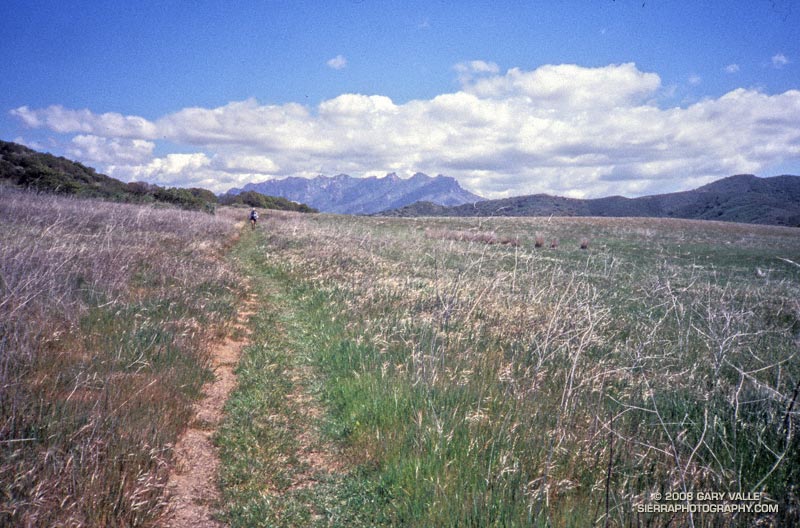
The scat appeared to be a day or two old, and was much bigger than a coyote’s. It was full of fur and could only be from one animal — a mountain lion. The spot had been used before, and it probably wasn’t a coincidence that this was one of the few points along the trail with a good view and nearby cover. I looked into the brush and wondered if unseen eyes looked back.
The sun was well above the horizon, but the first gusts of a developing Santa Ana wind kept the morning cool. No one was on the trail ahead or behind me, and the best I could tell, I was the only two-legged creature within sight.

Walking slowly from the spot, I surveyed the secluded valley. Perched on the edge of the coastal mountains, La Jolla Valley is extraordinary. Surrounded by wind-sculpted peaks, it is situated above and to the west of Big Sycamore Canyon. Its bottom is carpeted with areas of native and non-native grass. Only a tiny percentage of California’s native perennial grasslands remain, and like the big trees, they are relics of the past. Preservation of this native grassland is probably due to the valley’s proximity to the ocean, and its unique microclimate.
Here, trails have been run and peaks climbed for thousands of years. (Charcoal at an archaeological site in the valley has been dated to a maximum age of 7000 B.P.) Above me a raven calls, and Spirit-like, a gust of wind rustles through the grass. Respectfully, I continue running in the direction of Mugu Peak.
—
The run from Wendy Dr. was more moderate than expected. The first 3 miles of Sycamore Canyon Fire Road are paved, and whether on the fire road, or the single track trails that parallel the road at times, a fast pace can be maintained down to the junction with Wood Canyon Fire Road.
The Wood Canyon Vista Trail/Backbone Trail takes off right (west) from Sycamore Canyon Fire Road a short distance past the Wood Canyon Fire Road junction. It is moderately graded and very runnable. At it’s top a short zig right (north) on the Overlook Fire Road leads to the La Jolla Valley Fire Road, which can be followed left (west) down into La Jolla Valley.
Many, many variations of this course are possible. Here are archived maps of Rancho Sierra Vista/Satwiwa and Pt. Mugu State Park originally from the NPS Santa Monica Mountains web site. Also see the Pt. Mugu State Park maps on VenturaCountyTrails.org.
Depending on whether you want the beta, a little time in Google Earth should help clarify the options. This particular course worked out to about 21 miles, with about 2200 ft. of elevation gain/loss. Here’s a Google Earth image and 3D interactive view of a GPS trace of my route.
